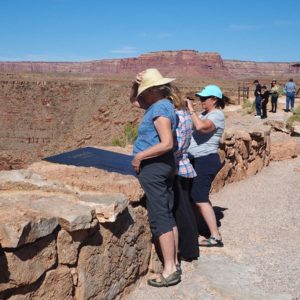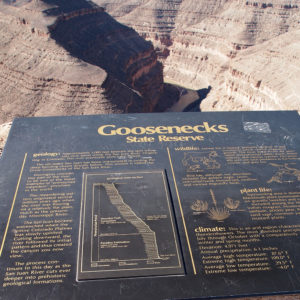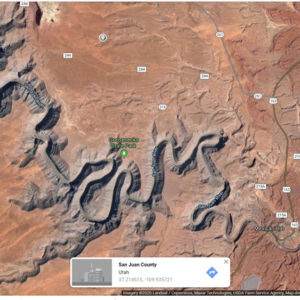SEE THE SAN JUAN RIVER-1,000 FEET BELOW
What is Goosenecks State Park?
At this State Park, you can see the “goosenecks”, or tight loops, made by the San Juan River 1,000 feet below as it flows towards the Colorado River. Geologists call these loops entrenched meanders or incised meanders. The park has an easily accessible viewpoint (no hiking) and offers spectacular views of the river as it flows through the goosenecks below.
The San Juan River flows more than 6 miles through the loops here. The distance “as the crow flies” is only 1.5 miles.
How Were the Goosenecks Formed?
When a river flows across a flat surface, the water tends to migrate sideways. But, if the flat surface is lifted up, the river cuts down into soft sandstone layers on the surface, and then cuts deeper and deeper into older and more resistant underlying bedrock.
Tens of millions of years ago, after the river had already charted its path, the land began to rise or uplift. This uplift forced the river to carve further and further down into the rock as the landscape slowly rose in elevation. Erosion by water, wind, frost, and gravity formed the Goosenecks as we see them today.
The Goosenecks of the San Juan often appear in geology textbooks as a classic location for observing entrenched or incised meanders.
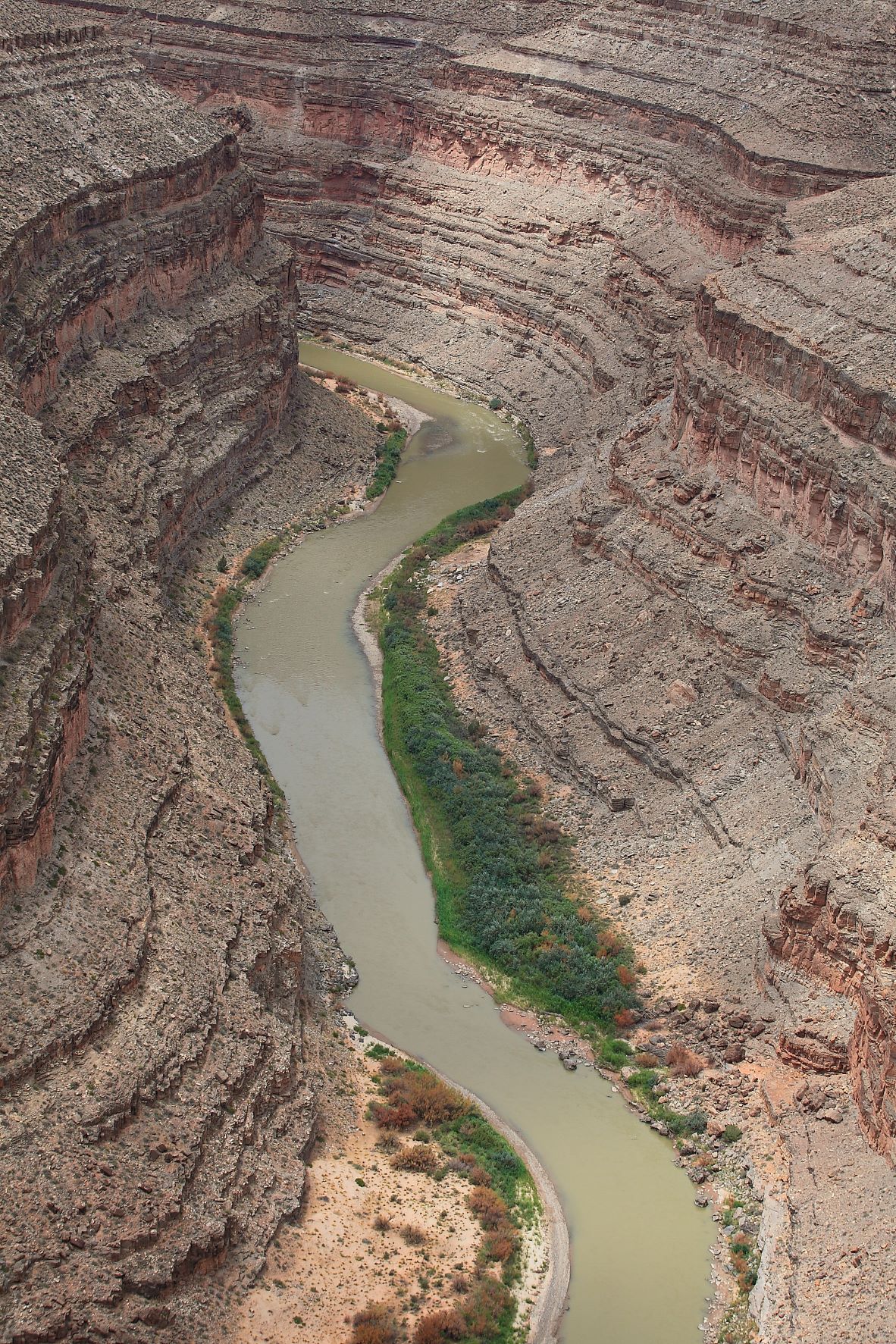
Geologists Love This
Geologists often make educational visits here. Canyon walls reveal the 300-million-year-old rocks of the Pennsylvanian Period with its two main formations: Honaker Trail Formation and Paradox Formation.
How the Honaker Trail Got Its Name: A nearby trail, the historic Honaker Trail, leads from the river to the top of the canyon (near the viewpoint). Along this trail, early studies were done on the Pennsylvanian period limestone. Geologists named a specific rock layer known as the Honaker Trail Formation for this trail.
Under the Honaker Trail Formation lies the Paradox Formation. At the Goosenecks, this very deep rock layer is laid bare and the Paradox Formation can be visualized and studied. Why are geologists interested in the Paradox Formation layer? Because rich amounts of oil have been found in this rock layer in other locations.
Visiting Goosenecks State Park
General Information
The park is easily accessible. The viewpoint is less than 5 miles from the main highway (US 163) and the road is paved. The viewpoint is a very short walk from the parking area and no hiking is required. It is often windy at the viewpoint, and it can be very hot in the summer months.
Pack a picnic and enjoy it at one of the picnic areas in the park. Visit after dark to see stars in the pristine night sky. Overnight camping is also available.
Hours: Open year round, 24/7. You do not need to book in advance to visit.
Fees: $5 day use fee per car with up to 8 people; $2 per person fee for bus tour groups; $10 per night per campsite. If not ranger on duty, pay at self-service fee tube.
Camping: Camping is available in 8 designated sites along the rim, where fire-ring and picnic tables are located. Camping is first come, first served site only. No reservations are accepted. Conditions are primitive. Bring your own fire wood and water. No services are available except vault toilets.
Elevation: 4500 feet.
Telephone: Goosenecks is a Utah State Park. Phone number: 435-678-2238
Stargazing
After the sun goes down, you can marvel at stars twinkling in some of the darkest skies in the world. Goosenecks State Park has been designated by the International Dark Sky Association as a Dark Sky Park.
To help you identify stars in the night sky, download a stargazing app to your mobile device before you visit. Internet access may not be available at Goosenecks.
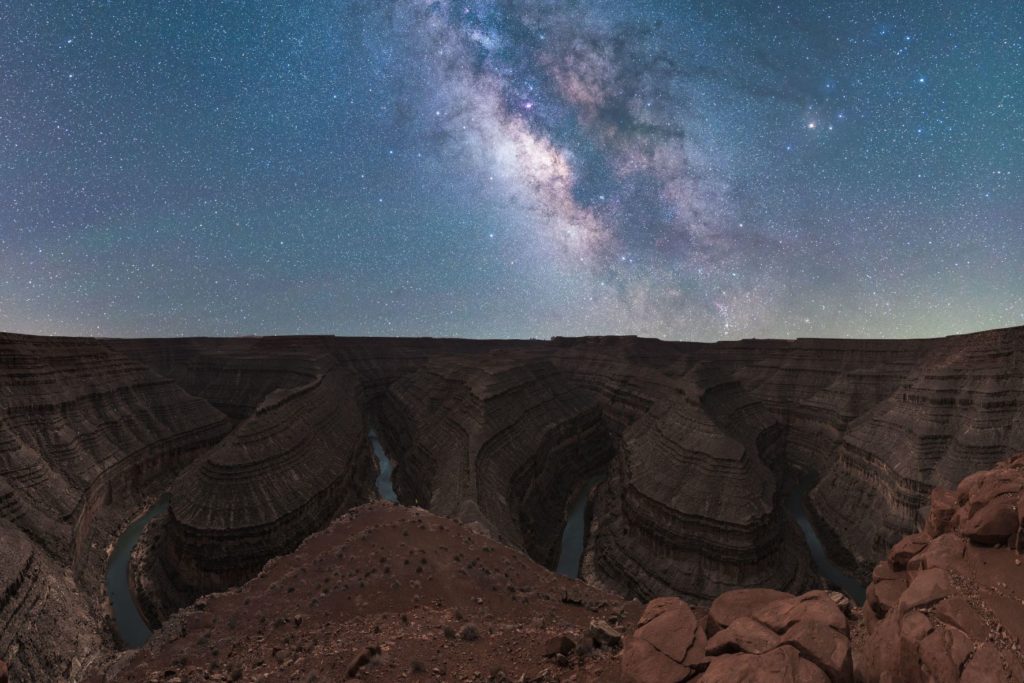
Directions and Nearby Attractions
How to Get to Goosenecks State Park: The park is approximately 25 miles west of Bluff. Drive west from Bluff on US 163 for 20 miles, then turn north on UT-261. Turn left at the sign for Goosenecks State Park (UT-316).
Nearby Attractions: We suggest this stop as part of the fantastic Trail of the Ancients Scenic Drive through Bears Ears Country. This scenic drive has stops at nearby Valley of the Gods, Moki (Mokey) Dugway and Muley Point, and Natural Bridges National Monument.
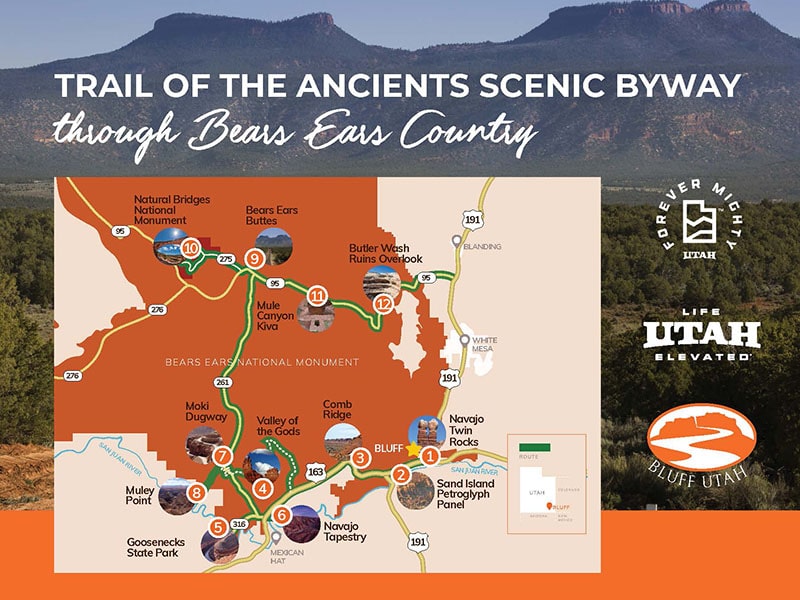 Map of Goosenecks State Park and Nearby Attractions
Map of Goosenecks State Park and Nearby AttractionsSources
Hopkins, Ralph Lee. Hiking the Southwest’s Geology; Four Corners Region.
Morris, Thomas H, Ritter Scott M, Laycock, Dallin P. Geology Unfolded. An Illustrated Guide to the Geology of Utah’s Parks.




